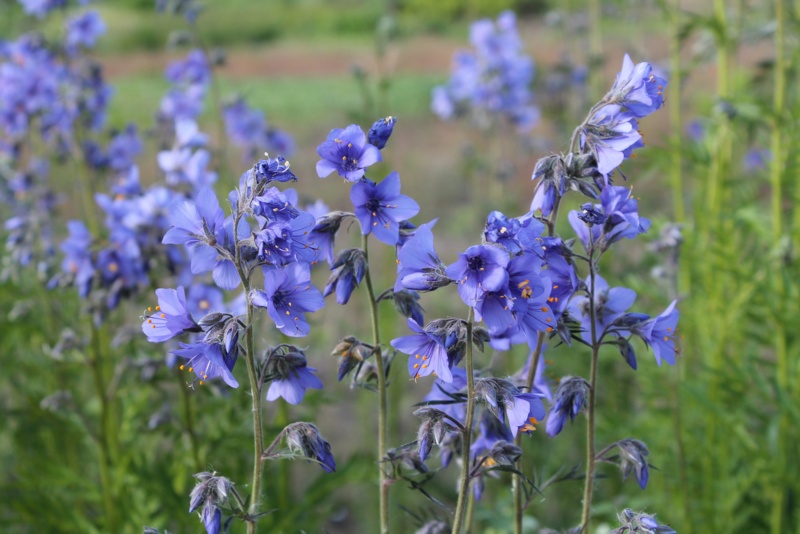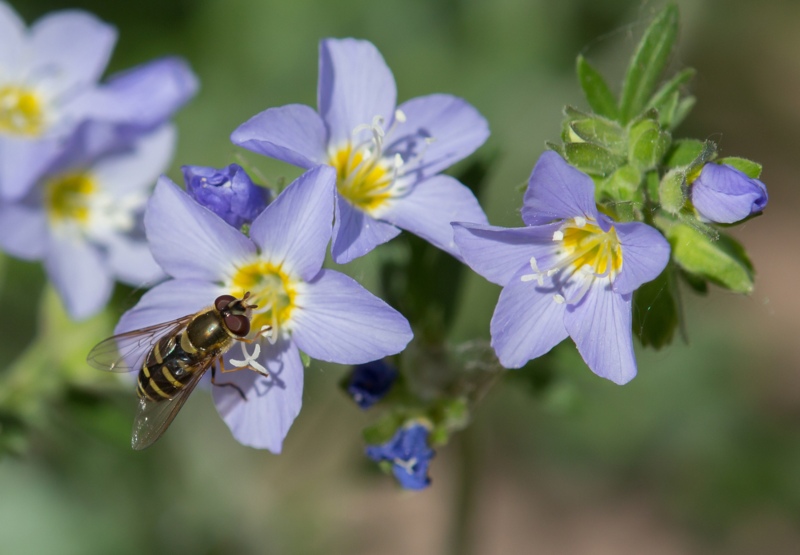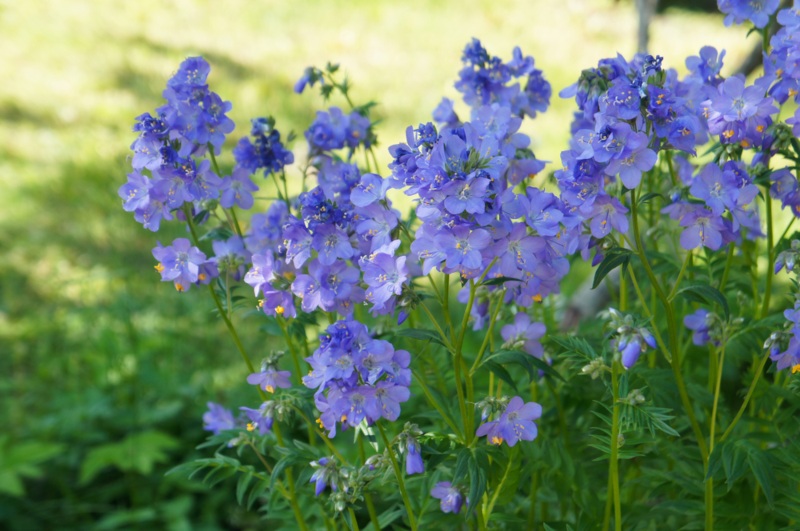The perennial plant Polemonium caeruleum comes from the Polemoniaceae family of nearly 400 different flowering species, all of which favor mild climates in North and South America and some Eastern European and Asian countries.

The plant is a wildflower most commonly known as Jacob’s Ladder, most notable from its blue, almost periwinkle flowers that sprout from the rungs of green leaves. Its ladder-like appearance lends the plant its common name, Jacob’s Ladder, with a bit of aid from the biblical tale about Jacob.
The plant is low maintenance in nearly every sense. For example, it does not require sunlight nor frequent pruning. In addition, it prefers moist soil as opposed to daily dousing.
People commonly grow Jacob’s Ladder as a border for beds, natural landscape design elements, or a shaded garden area. If you want more Jacob’s Ladder added to your landscape, the plant seeds themselves have to spread.
| Botanical Name: | Polemonium caeruleum |
| Common Name(s): | Jacob’s Ladder, Greek Valerian |
| Plant Type: | Perennial |
| Mature Size: | 1 – 1.5ft |
| Sun Exposure: | In-direct sunlight, shady areas |
| Water Needs: | Medium |
| Soil Type: | Moist, rich, and organic |
| Soil pH: | 6.0-7.0 |
| Bloom Time: | Spring and/or summer |
| Maintenance: | Low |
| Flower Color: | Blue |
| Hardiness Zones: | 3-8 |
| Toxicity: | Non-toxic |
Jacob’s Ladder Care
True and through, Jacob’s Ladder is getting harder and harder to come by as it faces environmental threats thanks to climate change even though the plant is mild-tempered and low maintenance.
However, with some fundamental know-how about light, water, humidity, soil, and other Jacob’s Ladder growing tips, you can successfully care for the plant in your home or yard.

Light
Jacob’s Ladder, while an enduring plant, does not like or need light all that much. If you leave it in direct sunlight or brazen heat for too long, the leaves will scorch and die. Therefore, you should keep your Jacob’s Ladder plant in partial to full-shaded areas.
Water
For a plant that doesn’t care for sunlight, it sure does appreciate moisture. Jacob’s Ladder thrives in moist or damp soil, which is why you can find it in shaded forests or wooded areas. However, the plant likes moisture, not a lot of water. Because of this, you don’t have to water the plant frequently, just every so often to keep its soil damp.
Temperature and Humidity
Just as humans don’t like too cold or too hot temperatures, Jacob’s Ladder thrives in a mild climate. In nature, the plant thrives in Eastern North American climates. So, it is best to mimic those temperatures if you don’t live in the designated region. However, do not expose the plant to harsh heat or intense cold as it will likely die.
Similarly, you don’t want to subject Jacob’s Ladder to direct or intense sunlight. Instead, keep the plant in a shaded area for the most part. If you’re in an area with warmer temperatures, you might grow the plant better in full shade instead of partial.
Soil
Jacob’s Ladder prefers rich, moist soil. Most likely, you’ll want to purchase a full, organic soil blend so that the plant gets the nutrients it needs. This soil type is also most likely to retain moisture, which Jacob’s Ladder will also need plenty of.
Potting and Repotting
Since Jacob’s Ladder spreads, it is not a commonly potted plant. However, if you purchase it from the store and want to transplant the flowering plant into a shaded area in your yard, you don’t have to exert much effort.
You’ll need to dig about a foot to 18-inches deep into the moist soil to provide a quality foundational nest for the plant. Then, plop the plant into the hole and cover its roots with the damp earth. Ensure the ground is moist enough to give the plant adequate hydration when you repot or transplant it to help it get comfortable in its new home.

Propagating
While Jacob’s Ladders seeds itself, you can handle this process yourself to manually spread the plant where you want it in your yard. To do so, you can seed, divide, or separate the plant during its bloom time in either the late spring or early summer.
If you choose to propagate your Jacob’s Ladder, plant the seeds in a big hole within rich soil. Cover them and mist the soil with water to keep them moist and nourished.
You can also propagate Jacob’s Ladder by cutting away dead or dying flowers. Since the plant seeds itself, flowers may re-bloom later on in cutting back some of the plants. However, you might be more successful in leaving the plant as it is or seeding it manually.
Pruning
Since Jacob’s Ladder is low-maintenance, you do not have to prune it often. Instead, if you notice the plant looks limp or has a few dead flowers and leaves, you can have at it with some shears to gently lob off dead ends. Or, you can tie the plant up against a neighbor or post to keep it upright.




